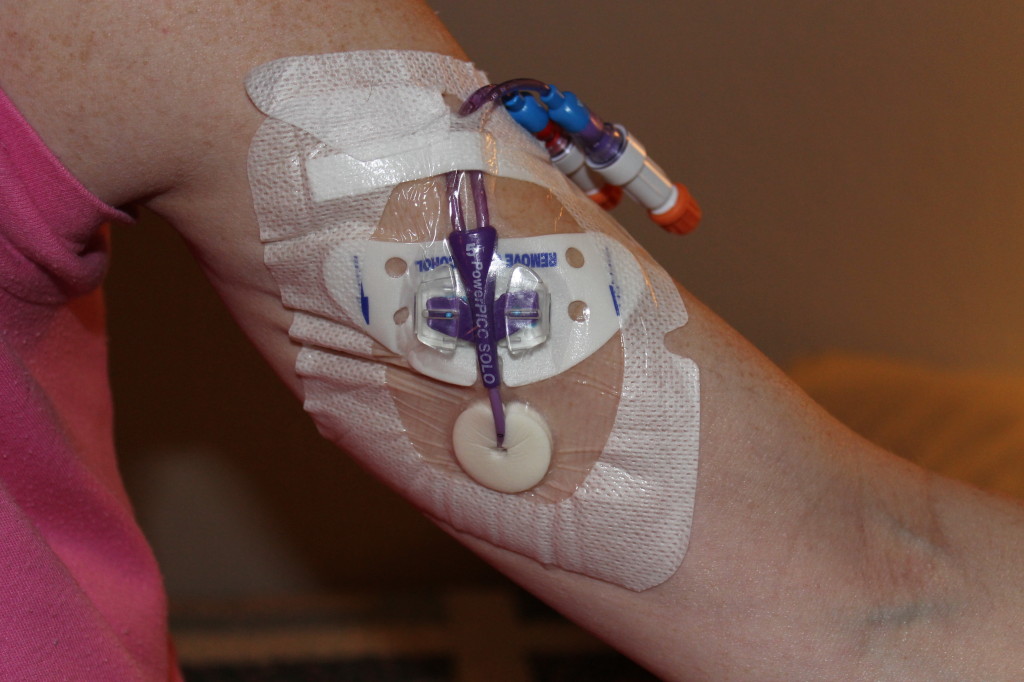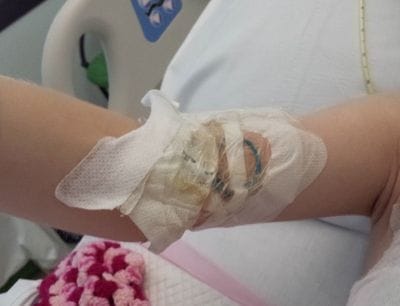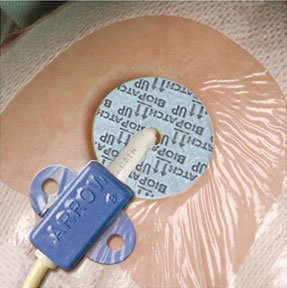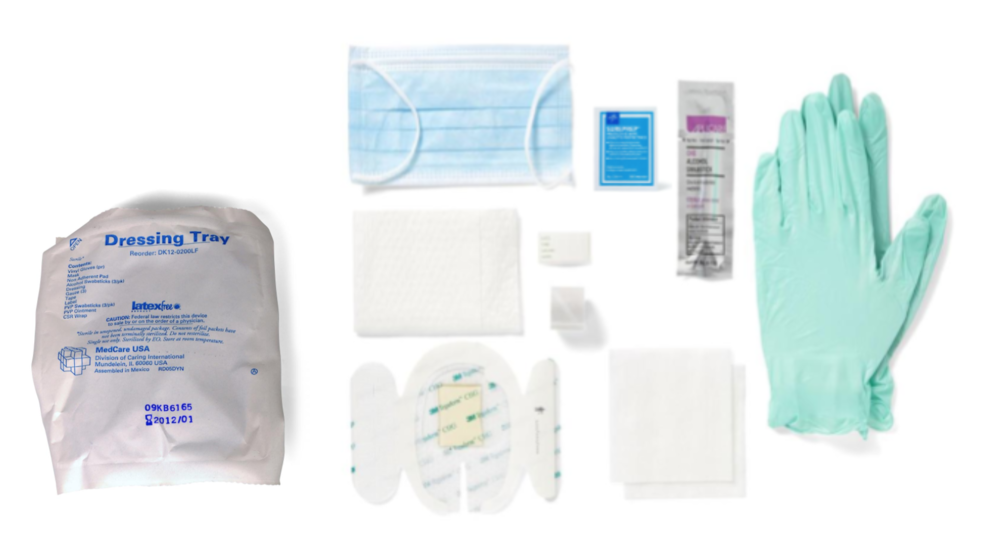central line dressing change how often
Check chart for allergies noting tape allergies. Intervention with a shorter interval between changes 2 to 5 days.

Pin By Janet Shaw On Motor Skills Nursing Nurse Skills Nursing Videos Nursing Procedures
In general a clear dressing needs to be changed once a week such as every Monday.

. Must perform these critical elements for successful completion. It is unclear whether there is a difference in the risk of suspected CRBSI between people having long or short intervals between dressing changes RR 070 95 CI 023 to 210 low quality evidence. A daily inspection should ensure that the line is properly in place free from infection and in working order.
Preventing infection while changing the dressing. Those dressings are changed every 7 days or if they fail to become occulsive. Verify facility policy and procedure for central line dressing changes.
Central line dressings should not be changed every day unless they are loose or soiled. Current recommendations are to change gauze dressing every two days and transparent semi-permeable dressing every seven days unless soiled or loose. Allow the area to dry on its own for at least 30 seconds.
Do not disturb or change a clean dry intact dressing until the due date. Apply a BioPatch disk to the area around the PICC line making sure the foam side is on the skin and the grid side is up. A peripherally inserted central catheter PICC is a long thin tube that goes into your body through a vein in your upper arm.
Changing and flushing a central line access cap. Of course with Tegaderm dressings they are transparent so you can see the catheter insertion site. Masks must be worn when changing clear caps.
Usually a pack of 3. This includes PICC lines. Central line dressings changes should be done every 7 days or as needed for peeling or soiling.
Wash your hands with warm soapy water. Follow any additional instructions your healthcare provider gives youTo change the dressing you need toIf you have been prescribed a dressing change kit follow the instructions for using supplies in that kitPrepare to change the dressing. The central line dressings should be changed a minimum of every seven days every 48hr if gauze is used.
A gauze dressing needs to be changed 2 or 3 times a week such as every Monday and Thursday or every Monday Wednesday and Friday. Report this to your healthcare provider as soon as possible. Peripherally inserted central catheter - dressing change.
Gather necessary equipment a. This includes gauze under a transparent dressing. Central line dressing kit.
If at any time the dressing peels becomes wet underneath becomes dirty etc. All components that can be changed extension sets connectors securement devices etc should be changed whenever a dressing change is. Wash your hands for 30 seconds with soap and water.
Clear caps for each line. Changing Your Dressings. At home you will need to change the dressing that protects the catheter site.
The studies used a variety of transparent dressings and compared a longer interval between dressing changes 5 to15 days. According to the most recent CDC Guidelines 1 gauze dressings should be changed every 48 hours and transparent semi-permeable dressings every 7 days or earlier if the integrity of the dressings is compromised or there is blood. In each study participants were followed up until the CVAD was removed or until discharge from ICU or hospital.
Also change your dressing right away if it becomes wet loose or dirty. CVC Dressing Change Continued Document date and time on dressing. Be sure to wash between your fingers and under your nails.
If the dressing becomes loose dirty or wet change it right away. However the evidence supporting these recommendations is limited. Routine inspection of the central line regardless of location should be performed daily.
Checklist for Prevention of Central Line Associate Blood Stream Infections. Dry with a clean paper towel. The end of this catheter goes into a large vein near your heart.
Remove all jewelry from your fingers. Set up your supplies on a clean surface on a new paper towel. Catheter Site Dressing Regimen.
If 22 gauze used after initial insertion under occlusive Tegaderm dressing dressing must be changed in 24 hours. All cause mortalityThree trials randomised a total of 896 participants to longer or shorter dressing intervals and measured all cause mortality. All studies used transparent dressings made of synthetic materials and two studies used gauze a fabric dressing that does not stick to the skin secured with tape when skin was.
Central Line Dressing Kit. Dressing changes for central lines should occur every 5 to 7 days with a transparent dressing or every two days with a gauze dressing. Assess condition of patients central line and dressing.
It should be changed immediately. Central Line Clear Cap Change and Flushing Instruction Sheet Change all clear caps every 7 days or any time the dressing is changed or if there is any blood in clear cap following flushing. Supplies for Clear Cap Change.
Cover the insertion site and patch with clear dressing. Put on a pair of clean gloves. If a patient has a sensitivity to Tegaderm dressings.
We classified the time intervals between dressing changes as short 2 - 5 days in the more frequently changed dressings group and long 5-15 days in the less frequently changed group. Central venous catheters are used very frequently in intensive care units. Sterile technique must be maintained to prevent Central-Line Associated Blood Stream Infections CLABSI Nursing Points General.
Line up the tubing and the slit. Check if dressing is wet loose or soiled. Some kits may contain betadine or alcohol to sterilize the area.
The information below describes the steps for changing the dressing. If you have a gauze dressing change it every 2 days. How often is central venous catheter healing done.
The central line provides a direct path into your bloodstream.

Dressing A Central Line Properly Maimonides Emergency Medicine Residency

Central Line Resources Dressing Change Youtube Central Line Nursing Videos Central Venous Catheter

Dressing A Central Line Properly Maimonides Emergency Medicine Residency

Central Line Dressing Change Nursing Skills Youtube

Ten Tips For Dressing And Securement Of Iv Device Wounds

Picc Dressing Change Peripherally Inserted Central Catheter For Nurses Youtube

5 Key Points Of Effective Biopatch Use Department Of Anesthesiology

Central Venous Access Device Dressing Change Nursing Skills Jove

What Is A Picc Line Infusion Solutions Inc

Central Line Dressing Change Nursing Skills Youtube

112 Central Venous Access Devices Eviq

How To Change The Dressing On Your Hickman Catheter Dana Farber Cancer Institute Boston Ma

Dressing A Central Line Properly Maimonides Emergency Medicine Residency

Central Line Dressing And Cap Changes Youtube

Dressing A Central Line Properly Maimonides Emergency Medicine Residency

Picc Dressing Change Peripherally Inserted Central Catheter For Nurses Youtube